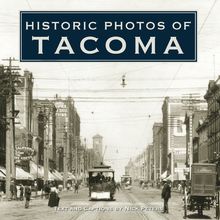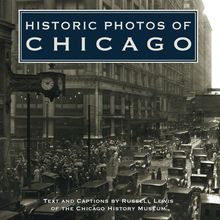Historic Photos of Montana , livre ebook
195
pages
English
Ebooks
2009
Vous pourrez modifier la taille du texte de cet ouvrage
Obtenez un accès à la bibliothèque pour le consulter en ligne En savoir plus
Découvre YouScribe en t'inscrivant gratuitement
Découvre YouScribe en t'inscrivant gratuitement
195
pages
English
Ebooks
2009
Vous pourrez modifier la taille du texte de cet ouvrage
Obtenez un accès à la bibliothèque pour le consulter en ligne En savoir plus
Publié par
Date de parution
01 février 2009
Nombre de lectures
3
EAN13
9781618584090
Langue
English
Poids de l'ouvrage
7 Mo
Montana is a land known for soaring vistas, towering peaks, and a rich heritage. The nearly 200 photographs in this collection celebrate the unique history of America’s fourth-largest state. Ride along as photographers document life on the state’s seven Indian reservations. Witness the birth, and sometimes death, of Montana’s rough-and-tumble cities. Drawn from national and regional collections, Historic Photos of Montana offers a window into a vibrant past.
Whether taken atop a mountain in Glacier National Park, or on the banks of the Yellowstone River, these photos tell stories that celebrate the people of Big Sky Country. There are images of cowboys and loggers and miners, of course, but also of shopkeepers and schoolchildren, of politicians and housewives and other ordinary citizens who made their home in Montana. Sit back and enjoy the stories these photos tell, stories rich with the majesty, grandeur, and colorful history of the Treasure State.
Publié par
Date de parution
01 février 2009
Nombre de lectures
3
EAN13
9781618584090
Langue
English
Poids de l'ouvrage
7 Mo
HISTORIC PHOTOS OF
MONTANA
T EXT AND C APTIONS BY G ARY G LYNN
The 1863 discovery of color in Alder Gulch set off a gold rush from Bannack to what would soon be Virginia City. Within two years Virginia City had become the territorial capital and boasted a population in the thousands. Seen here near the end of the nineteenth century, Virginia City today is a popular Old West tourist destination.
HISTORIC PHOTOS OF
MONTANA
Turner Publishing Company
200 4th Avenue North Suite 950
Nashville, Tennessee 37219
(615) 255-2665
www.turnerpublishing.com
Historic Photos of Montana
Copyright 2009 Turner Publishing Company
All rights reserved.
This book or any part thereof may not be reproduced or transmitted in any form or by any means, electronic or mechanical, including photocopying, recording, or by any information storage and retrieval system, without permission in writing from the publisher.
Library of Congress Control Number: 2008901853
ISBN-13: 978-1-59652-460-6
Printed in China
09 10 11 12 13 14 15-0 9 8 7 6 5 4 3 2 1
C ONTENTS
A CKNOWLEDGMENTS
P REFACE
S TATE O RIGINS IN A C ENTURY OF C HANGE (1860-1899)
M ONTANA S C OPPER C OLLAR (1900-1919)
A T IME OF D ROUGHT AND D EPRESSION (1920-1939)
P EARL H ARBOR TO P OSTWAR B OOM (1940-1960)
N OTES ON THE P HOTOGRAPHS
Wagons wait outside the Cataract Mill in Great Falls. Paris Gibson, the founding father of Great Falls, had been a partner in the first flour mill in Minneapolis, and in 1884 he brought H. O. Chowen from Minnesota to organize a branch of the Cataract Mill Company in the young Montana town.
A CKNOWLEDGMENTS
This volume, Historic Photos of Montana , is the result of the cooperation and efforts of many individuals, organizations, and corporations. It is with great thanks that we acknowledge the valuable contribution of the following for their generous support:
Mansfield Library, Archives and Special Collections, The University of Montana-Missoula
The Historical Museum at Fort Missoula
Library of Congress
Amy Casamassa, Mansfield Library
Mark Fritch, Mansfield Library
The writer would like to thank Daniel Cooper of Turner Publishing for his cogent editing; Dale Johnson, former archivist at the Mansfield Library, for Hallways to History; and all the photographers, professional and amateur, known and unknown, who preserved the history of the Treasure State on film. Of special note are R. H. McKay, who faithfully chronicled the landscapes of western Montana, Edward Curtis, who obsessively recorded the culture of the American Indian, and photojournalist Stan Healy, who roamed the gritty streets of downtown Missoula with camera in hand.
The contributions of Mary Lyndes, Kelsey Glynn, and Connor Glynn made this book possible.
P REFACE
Montana has thousands of historic photographs that reside in archives, both locally and nationally. This book began with the observation that, while those photographs are of great interest to many, they are not easily accessible. During a time when Montana is looking ahead and evaluating its future course, many people are asking, How do we treat the past? These decisions affect every aspect of the state-architecture, public spaces, commerce, infrastructure-and these, in turn, affect the way that people live their lives. This book seeks to provide easy access to a valuable, objective look into the history of Montana.
The power of photographs is that they are less subjective than words in their treatment of history. Although the photographer can make decisions regarding subject matter and how to capture and present it, photographs do not provide the breadth of interpretation that text does. For this reason, they offer an original, untainted perspective that allows the viewer to interpret and observe.
This project represents countless hours of review and research. The researchers and writer have reviewed thousands of photographs in numerous archives. We greatly appreciate the generous assistance of the individuals and organizations listed in the acknowledgments of this work, without whom this project could not have been completed.
The goal in publishing this work is to provide broader access to this set of extraordinary photographs that seek to inspire, provide perspective, and evoke insight that might assist people who are responsible for determining Montana s future. In addition, the book seeks to preserve the past with adequate respect and reverence.
With the exception of touching up imperfections caused by the damage of time and cropping where necessary, no other changes have been made to the photographs in this volume. The focus and clarity of many images is limited to the technology and the ability of the photographer at the time they were taken.
The work is divided into eras. Beginning with some of the earliest known photographs of Montana, the first section records photographs through the end of the nineteenth century. The second section spans the beginning of the twentieth century through World War I. Section Three moves from the 1920s to the end of the Great Depression. The last section covers the World War II years and the first decades of the postwar era.
In each of these sections we have made an effort to capture various aspects of life through our selection of photographs. People, commerce, transportation, infrastructure, religious institutions, and educational institutions have been included to provide a broad perspective.
We encourage readers to reflect as they go walking in Montana, strolling through its parks, its countryside, and the neighborhoods of its cities. It is the publisher s hope that in utilizing this work, longtime residents will learn something new and that new residents will gain a perspective on where Montana has been, so that each can contribute to its future.
-Todd Bottorff, Publisher
Seen here in its heyday around 1895, Garnet today is one of Montana s best-preserved ghost towns. The district s 50 mines produced almost $10 million in precious metals between 1862 and 1916. The Garnet Preservation Association has been instrumental in protecting much of the town.
S TATE O RIGINS IN A C ENTURY OF C HANGE
(1860-1899)
Named after the Spanish word for mountain, Montana was first introduced to the American people by members of the Lewis and Clark expedition. Adventurous souls were intrigued by the explorers descriptions of towering mountains and vast plains, a land populated by seemingly limitless herds of elk and bison. Soon after Lewis and Clark returned east, fur trappers followed in their footsteps to Montana, eager to harvest the wealth of what would become known as the Treasure State. There was only one problem-Montana was already occupied.
The Gros Ventre, Assiniboine, and Sioux roamed the eastern plains, while the powerful Blackfeet and Crow tribes controlled large swaths of central Montana. Salish, Kootenai, and Pend d Oreille occupied the western valleys, and roaming bands of Nez Perce, Northern Cheyenne, Chippewa, and Cree often visited the state. The native tribes soon realized their traditional way of life was threatened by the influx of newcomers.
Among the earliest trappers to reach Montana were a group of Iroquois Indians, who intrigued the Salish with their tales of the Black Robes, or Catholic priests. The Salish sent word to St. Louis asking that Black Robes be sent to them, and as a result, St. Mary s Mission was built in 1841. It was the first white settlement in Montana. Established in 1847, the Missouri River trading post of Fort Benton (originally Fort Clay) became an important transportation hub, especially after the discovery of gold at Alder Gulch and Nevada Gulch in the 1860s. Montana became a territory in 1864.
Sioux and Cheyenne leaders forcefully resisted government efforts to place them on reservations and handily defeated the 7th Cavalry at the Battle of the Little Big Horn. This defeat shocked the American public, and by 1877, when Chief Joseph of the Nez Perce led his people through Montana on an epic journey for freedom, the U.S. Army was already hard at work constructing a number of new military posts, including Fort Keogh, Fort Custer, and Fort Missoula.
The 1880s brought railroads and increased industrialization, especially in Butte, the state s largest city. The copper from Butte s mines was a critical component in the emerging technologies of electrical lighting and the telephone. Statehood in 1889 brought an epic battle between Marcus Daly and William A. Clark, the powerful copper kings of Butte, over the location of the new state capital. Daly advocated Anaconda, while Clark favored Helena, which was eventually chosen.
Fort Benton served as a major steamboat port for travelers to Montana for nearly 30 years. This photo shows the three-story paddle wheeler Montana in 1879. The largest ship to reach Fort Benton, it ran aground in 1884 on the banks of the lower Missouri.
Sheriff Henry Plummer built the first jail in Montana by soliciting donations from the residents of Bannack, a gold rush camp with 3,000 residents, in 1863 (not 1862, as indicated on the sign in this photo). Suspecting that Plummer was actually the leader of a vicious gang of road agents, vigilantes hanged him in 1864.
John X. Biedler was an active member of the Vigilance Committee and was responsible for hanging at least five outlaws in Bannack and Virginia City in 1864. Known simply as X, he later became a stagecoach guard and deputy U.S. marshal.
A muddy creek dubbed Last Chance Gulch by four discouraged prospectors became the main street of Montana s capital city. This photo shows the thriving city, Helena, in 1880. Today the area is home to a pedestrian mall.
In 1831 four Salish Indians traveled to St. Louis to ask the Catholic Church to send priests to Montana. In 1841 several Black Robes arrived in the Bitterroot Valley and built St. Mary s Mission. The mission church can be seen behind the tepees in this 1880s photo.














